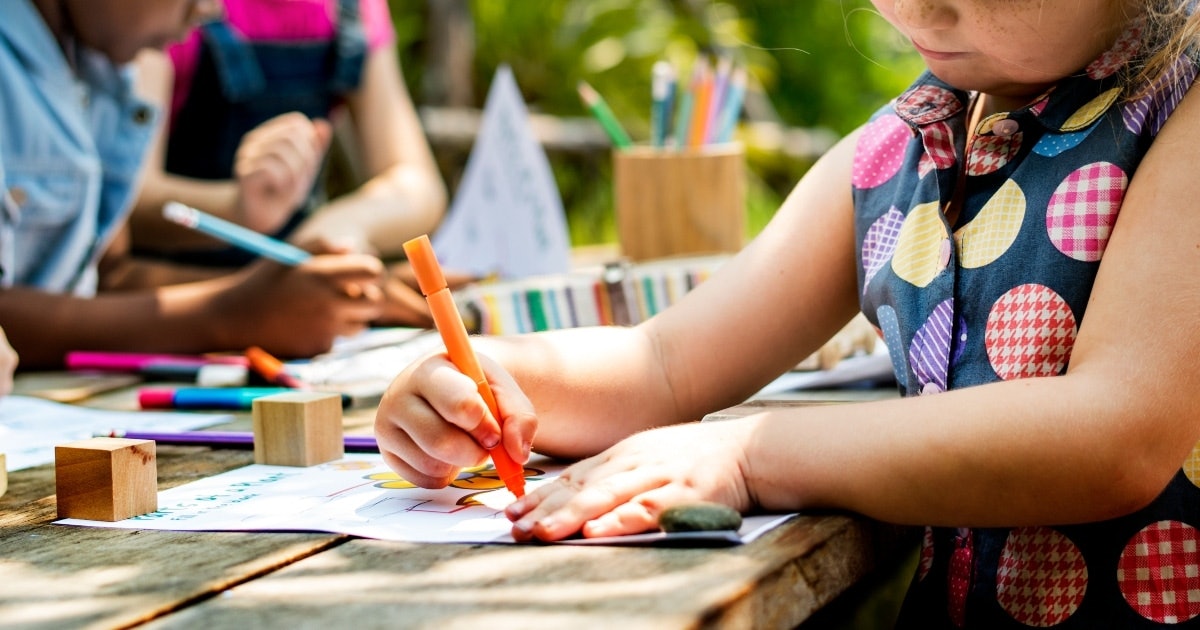
Art therapy can be a transformative journey for children, providing them with a safe space for emotional expression and personal growth. As parents, there are crucial ways we can support and enhance this process for our children.
By creating a supportive environment, guiding their artistic process, and nurturing their emotional expression, we can play a vital role in their art therapy journey.
In this article, we will explore seven essential ways parents can support their child's art therapy journey, ensuring their emotional well-being and artistic development.
Creating a Supportive Environment at Home
The creation of a supportive environment at home is essential for children undergoing art therapy. Parents play a crucial role in establishing this environment by creating a designated art therapy space and incorporating art therapy into daily routines.
To begin, parents can set up a designated area in the house where their child can comfortably engage in art therapy activities. This space should be quiet, well-lit, and stocked with art supplies such as paints, brushes, and paper. By creating a dedicated space, parents signal to their child that art therapy is valued and provide a safe and inviting space for self-expression.
In addition to a designated space, parents can incorporate art therapy into daily routines. This can involve setting aside specific times for art therapy sessions, integrating art activities into daily schedules, or encouraging their child to use art as a means of processing emotions and experiences.
Guiding and Encouraging the Artistic Process
When it comes to guiding and encouraging your child's artistic process, there are several crucial points to keep in mind.
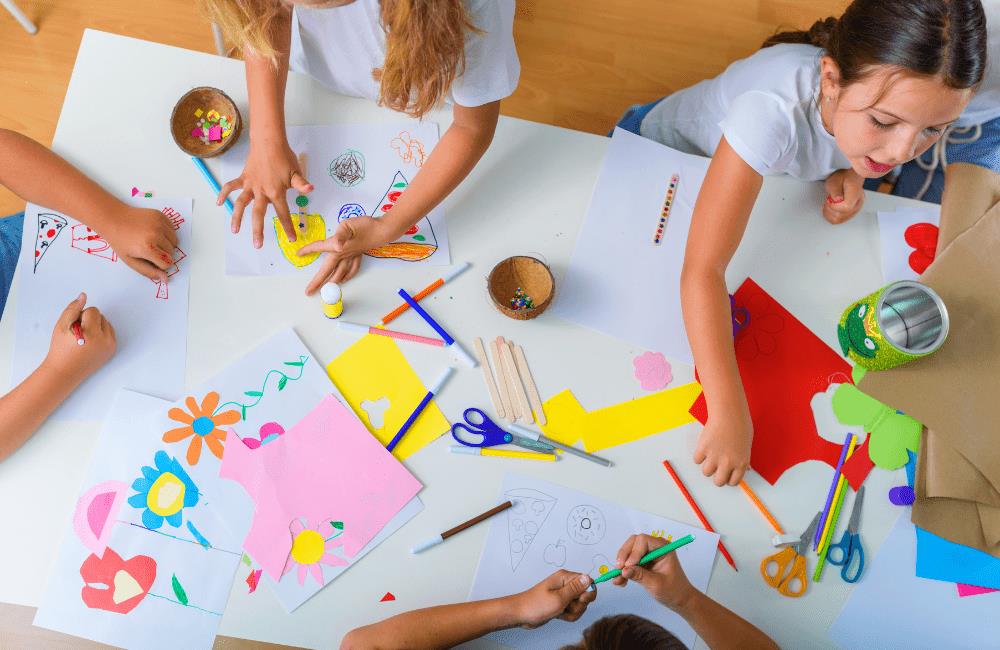
Firstly, as a parent, you have the opportunity to facilitate their creative exploration by providing a safe and supportive environment.
Secondly, nurturing their artistic self-expression involves validating their feelings and ideas, and encouraging them to express themselves freely through art.
Lastly, it's important to embrace and celebrate your child's individual artistic journey, acknowledging that each child's creative process is unique and valuable.
Facilitating Creative Exploration
Facilitating creative exploration involves actively guiding and encouraging the artistic process for children in art therapy.
As parents, it is essential to create an environment that supports and nurtures their child's artistic growth.
Encouraging artistic experimentation allows children to explore different mediums, techniques, and styles, fostering their creative expression.
Provide them with a variety of art supplies, such as paints, clay, and collage materials, to inspire their imagination and encourage experimentation.
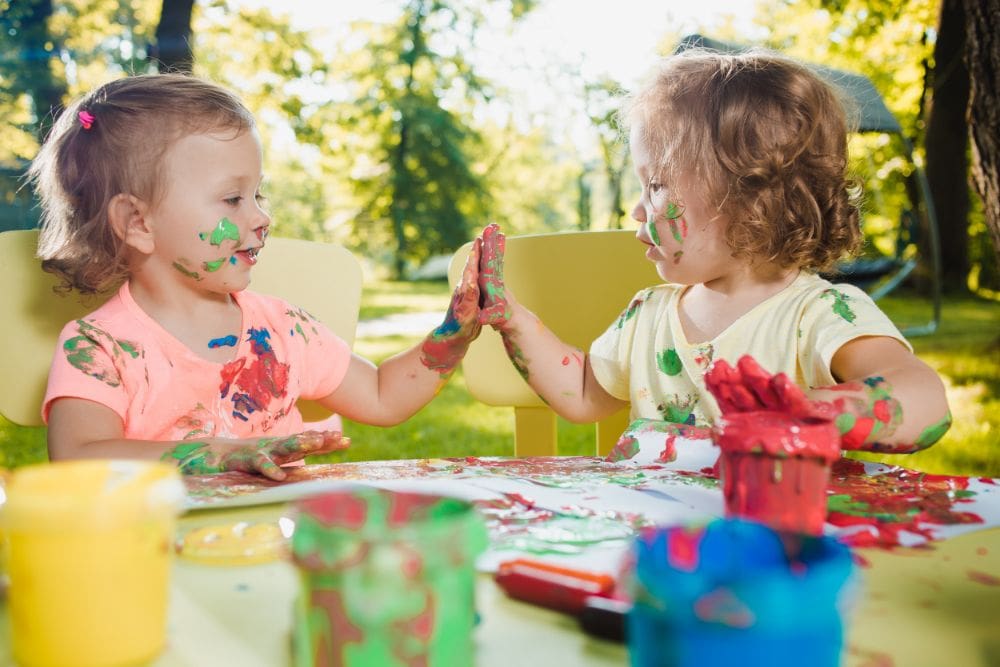
Allow them the freedom to explore and make mistakes, emphasizing that there are no right or wrong answers in art.
Offer praise and positive reinforcement for their efforts and unique artistic choices.
Engage in open-ended conversations about their artwork, asking open-ended questions that promote self-reflection and exploration.
Nurturing Artistic Self-Expression
By actively guiding and encouraging the artistic process, parents can nurture their child's artistic self-expression during their art therapy journey. Fostering creativity is essential in this aspect, as it allows children to explore their imagination and express themselves freely.
As parents, you can provide them with a safe and supportive environment where they can experiment with different art materials and techniques. Encourage them to try new things, take risks, and trust their instincts. Promoting self-confidence is equally crucial.
Praise their efforts and focus on the process rather than the end result. Emphasize that there are no right or wrong answers in art, and that their unique perspective is valuable. By nurturing their artistic self-expression, you are empowering your child to discover their own voice and find joy in the creative process.
Embracing Individual Artistic Journeys
Parents can actively guide and encourage their child's artistic process by embracing their individual artistic journeys. Supporting growth and celebrating achievements are essential in nurturing their child's creative development.
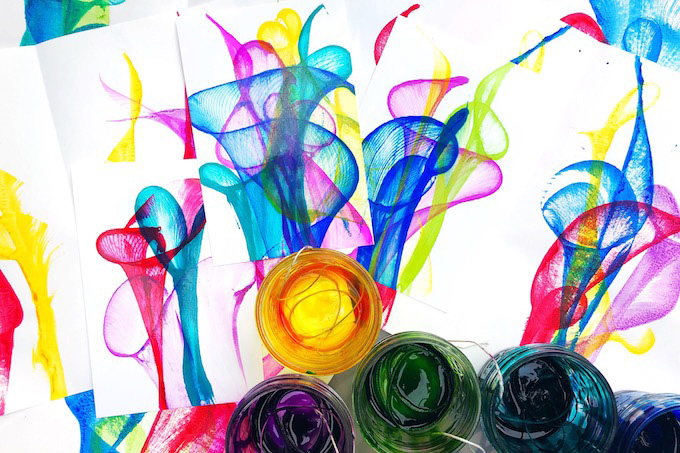
It is important for parents to respect their child's artistic choices and allow them the freedom to explore various mediums and styles. By providing a supportive and non-judgmental environment, parents can foster a sense of confidence and self-expression in their child's art.
Encouraging experimentation and risk-taking can help children discover their unique artistic voice and develop their own artistic processes. Parents can offer gentle guidance and constructive feedback, while also recognizing and celebrating their child's achievements, no matter how small.
Embracing their child's individual artistic journey will not only enhance their creativity but also promote self-discovery and personal growth.
Empathizing With the Child's Perspective
Empathizing with your child's perspective is crucial in supporting their art therapy journey. Understanding their emotions allows you to create a safe and non-judgmental space for self-expression through art.
Understanding Their Emotions
An essential aspect of supporting a child's art therapy journey involves gaining a comprehensive understanding of the various emotions they experience. It is crucial for parents to empathize with their child's perspective, allowing them to feel understood and supported.
By recognizing and acknowledging their emotions, parents can provide a safe and nurturing environment for their child's emotional development. Art therapy allows children to express their feelings through creative expression, and as parents, it is important to encourage and validate their emotions.
Building trust is a key component in this process, as it allows children to feel comfortable sharing their innermost thoughts and emotions. By actively listening and showing empathy, parents can help their child navigate through their emotions and gain a deeper understanding of themselves.
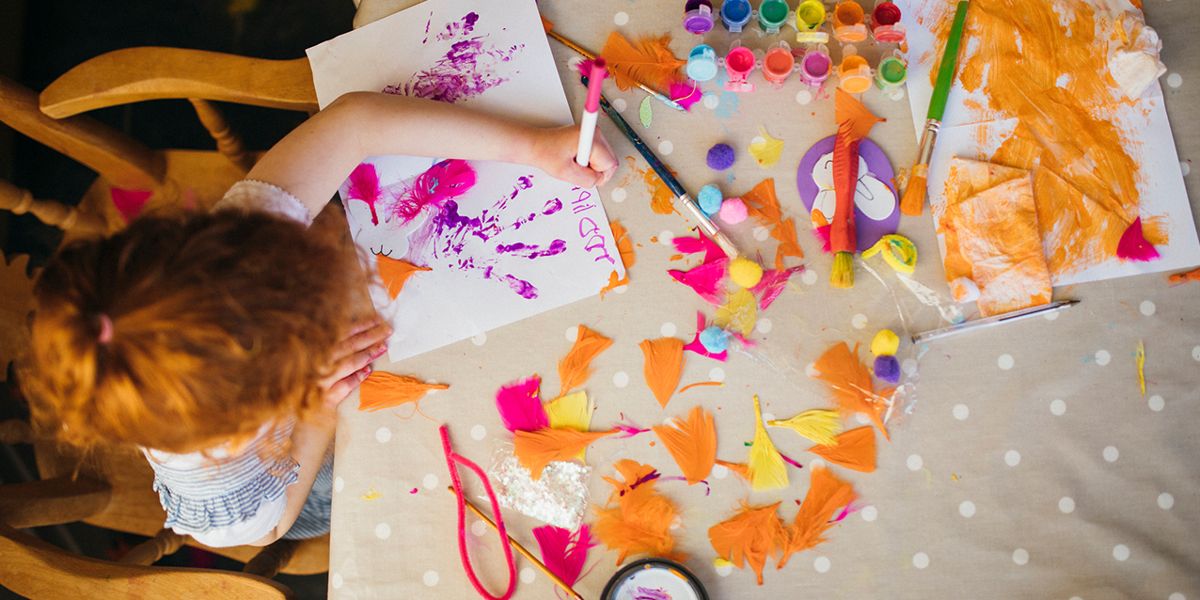
Encouraging Self-Expression Through Art
To foster self-expression through art, it is essential to understand the child's perspective and provide a supportive environment. Encouraging artistic growth can have a profound impact on a child's overall development, fostering confidence and self-esteem.
Here are some ways you can empower your child to express themselves through art:
Create a safe space: Provide a dedicated area where your child can freely explore their creativity without fear of judgment or criticism.
Offer a variety of materials: Supply a wide range of art materials, such as paints, markers, clay, and collage materials, to encourage experimentation and self-discovery.
Validate their feelings: Listen attentively and acknowledge your child's emotions as they create, allowing them to express themselves authentically.
Celebrate their uniqueness: Emphasize the importance of individuality and celebrate your child's unique artistic style, fostering a sense of pride and self-worth.
Display their artwork: Showcase your child's artwork in a prominent place, reinforcing their confidence and encouraging further artistic exploration.

Active Listening and Validation
In order to effectively support their child's art therapy journey, parents must actively listen and validate their child's perspective.
Active listening involves giving your full attention to your child when they are expressing themselves through art. This means putting aside distractions and truly focusing on what they are saying, both verbally and non-verbally. Show empathy by acknowledging and understanding their feelings, thoughts, and experiences.
By doing so, you create a safe space for your child to express themselves freely and openly. Validating their perspective means accepting and affirming their emotions and experiences, even if you may not fully understand or agree with them.
This validation helps your child feel heard and understood, which is essential for their growth and healing in art therapy. Remember, your active listening and empathetic validation empower your child to explore their emotions and find their own voice through art.
Nurturing Emotional Expression Through Art
Facilitating emotional expression through art can help children explore and communicate their feelings in a safe and creative manner. Art therapy techniques provide a structured and supportive environment for children to express themselves freely. Here are some benefits of nurturing emotional expression through art:
Encourages self-discovery: Art allows children to tap into their inner thoughts and emotions, helping them gain a deeper understanding of themselves.
Promotes emotional release: By engaging in art, children can release pent-up emotions and find relief from stress and anxiety.
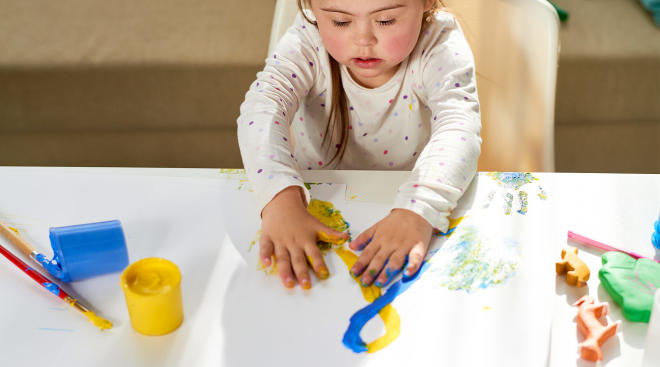
Enhances communication skills: Art provides a nonverbal way for children to express their emotions, allowing them to communicate their feelings more effectively.
Builds self-esteem: Creating art helps children develop a sense of accomplishment and boosts their self-confidence.
Fosters problem-solving skills: Through art, children learn to navigate challenges, make decisions, and find creative solutions.
Establishing Effective Communication With the Therapist
Effective communication with the therapist is crucial in supporting a child's art therapy journey. Building trust and setting boundaries are essential components of this process. Trust is the foundation of any therapeutic relationship, and it is important for parents to encourage their child to develop trust in their therapist.
This can be achieved by ensuring that the child feels safe and supported during their sessions, and by actively participating in the therapy process. Parents should also work with the therapist to establish clear boundaries for communication.
This includes discussing the appropriate times and methods for contacting the therapist, as well as understanding the therapist's role and limitations. By fostering effective communication, parents can help create a supportive environment that allows their child to fully benefit from art therapy.
Ensuring the Safety of Finished Art Projects
Parents should take necessary precautions to ensure the safety of their child's finished art projects. Art project preservation is important to maintain the integrity and longevity of the artwork. Here are some display options to consider:
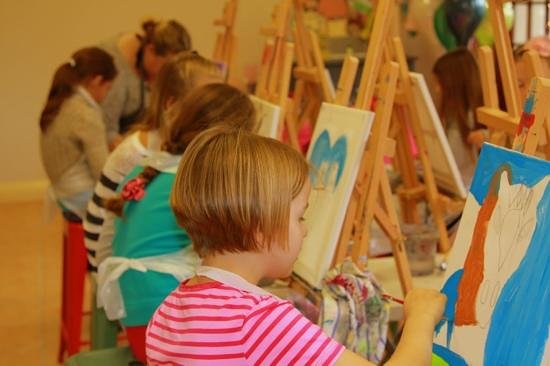
- Framing: Choose a suitable frame that complements the artwork and protects it from damage.
- Lamination: Protect delicate pieces by laminating them, preserving their original colors and preventing smudging or tearing.
- Display shelves: Install shelves to showcase sculptures, ceramics, or 3D artwork, ensuring they are securely placed and protected from accidental falls.
- Acid-free storage: Store artwork in acid-free folders or portfolios to prevent yellowing or deterioration over time.
- Digital preservation: Take photographs or scan the artwork to create digital copies, allowing for easy storage and sharing while preserving the original piece.
Inspiring and Maintaining Consistency in Art Therapy Practices
Encourage your child to regularly engage in art therapy activities to foster inspiration and ensure a consistent practice. By creating a routine, your child will have a dedicated time and space for their artistic exploration. This will help them develop a sense of discipline and commitment to their creative journey.
Fostering creativity is essential in art therapy as it allows children to express their emotions and thoughts in a non-verbal way. Encourage them to experiment with different art mediums and techniques, allowing them to discover new ways of self-expression.
Promoting self-discovery is another crucial aspect of art therapy. Encourage your child to reflect on their artwork and explore the emotions and narratives behind their creations.
Frequently Asked Questions
How Long Does It Typically Take for a Child to Start Experiencing the Benefits of Art Therapy?
The length of time it takes for a child to start experiencing the benefits of art therapy can vary. However, tracking progress in art therapy can provide valuable insights and evidence of its effectiveness, especially for children with different developmental disorders.
Can Art Therapy Be Used as a Standalone Treatment for Children With Behavioral Issues?
Art therapy can be an effective standalone treatment for children with behavioral issues, providing a creative outlet for expression and promoting emotional well-being. However, it is important to consider individual needs and consult with professionals for a comprehensive approach that may include alternative interventions.
Are There Any Specific Art Materials That Are Recommended for Art Therapy Sessions With Children?
Recommended art materials for children in art therapy sessions include various types of paint, markers, crayons, and clay. These materials offer benefits such as self-expression, emotional release, and sensory stimulation, making them essential tools for a successful art therapy journey.
When a child does not show improvement or engagement in art therapy, it may indicate ineffective art therapy. Signs such as lack of interest, resistance, or worsening symptoms may suggest the need for alternative therapy options.

How Can Parents Continue to Support Their Child's Art Therapy Journey Once the Therapy Sessions Have Ended?
Continuing support is essential in fostering a child's artistic expression outside of therapy sessions. Parents can encourage creativity, provide art supplies, and create a safe space for their child to explore and express themselves through art.
 Kids Art ProjectsParty PlanningPaper CraftsOrigami for KidsPrivacy PolicyTerms And Conditions
Kids Art ProjectsParty PlanningPaper CraftsOrigami for KidsPrivacy PolicyTerms And Conditions
